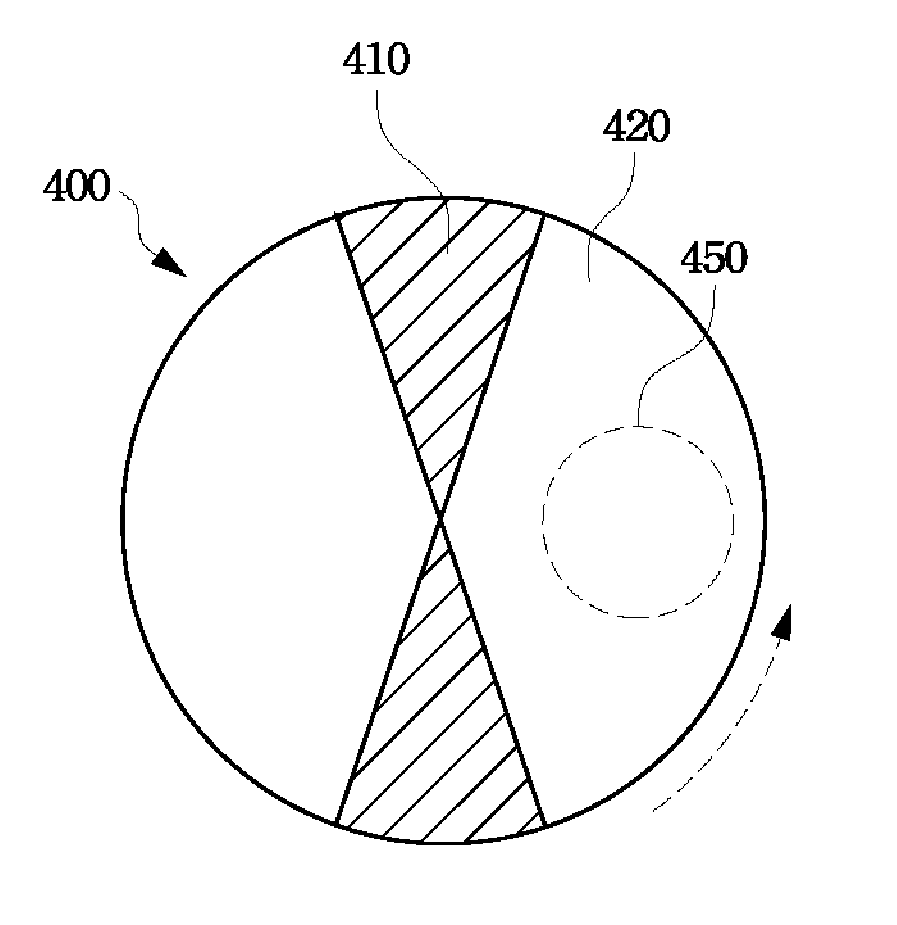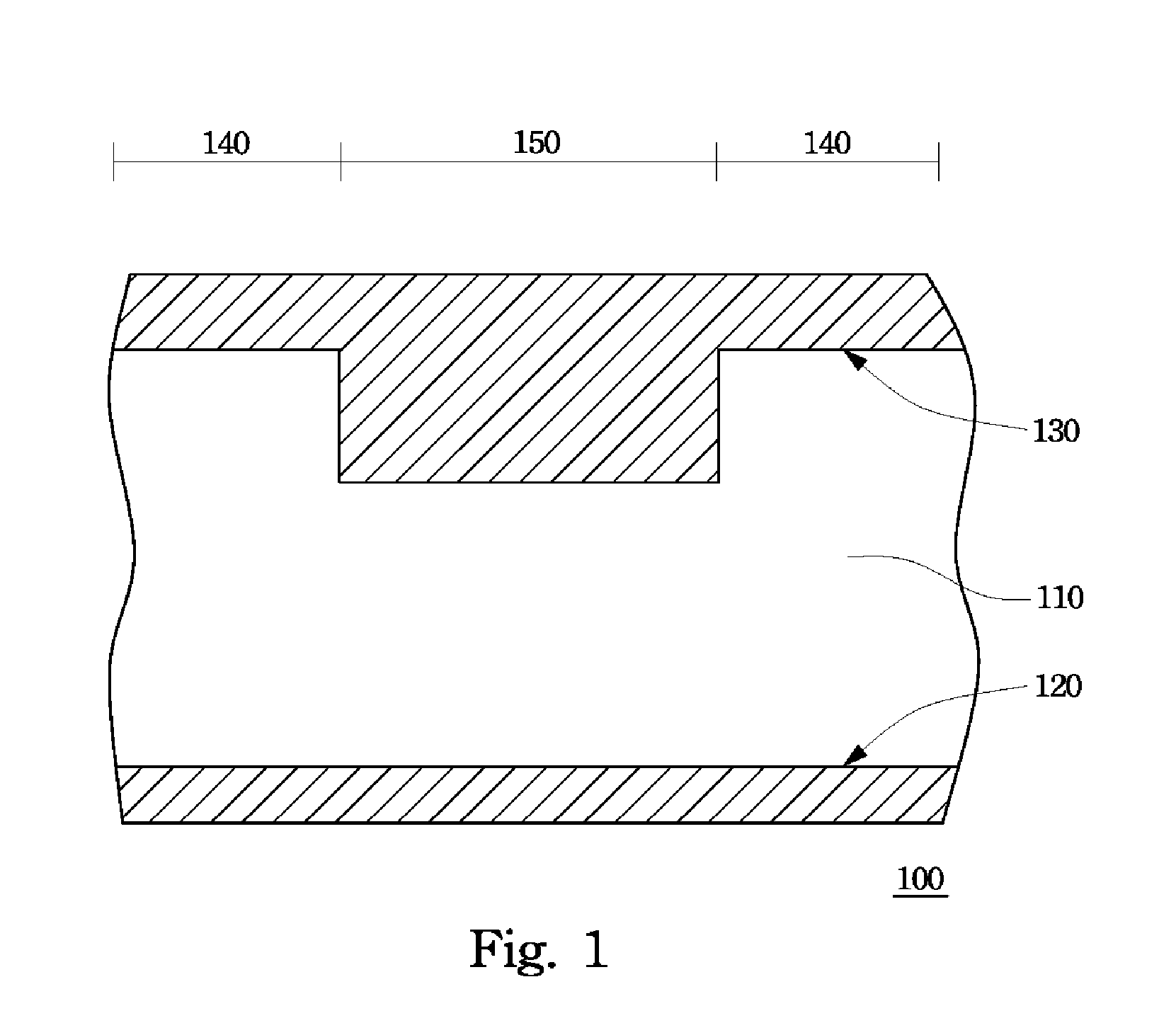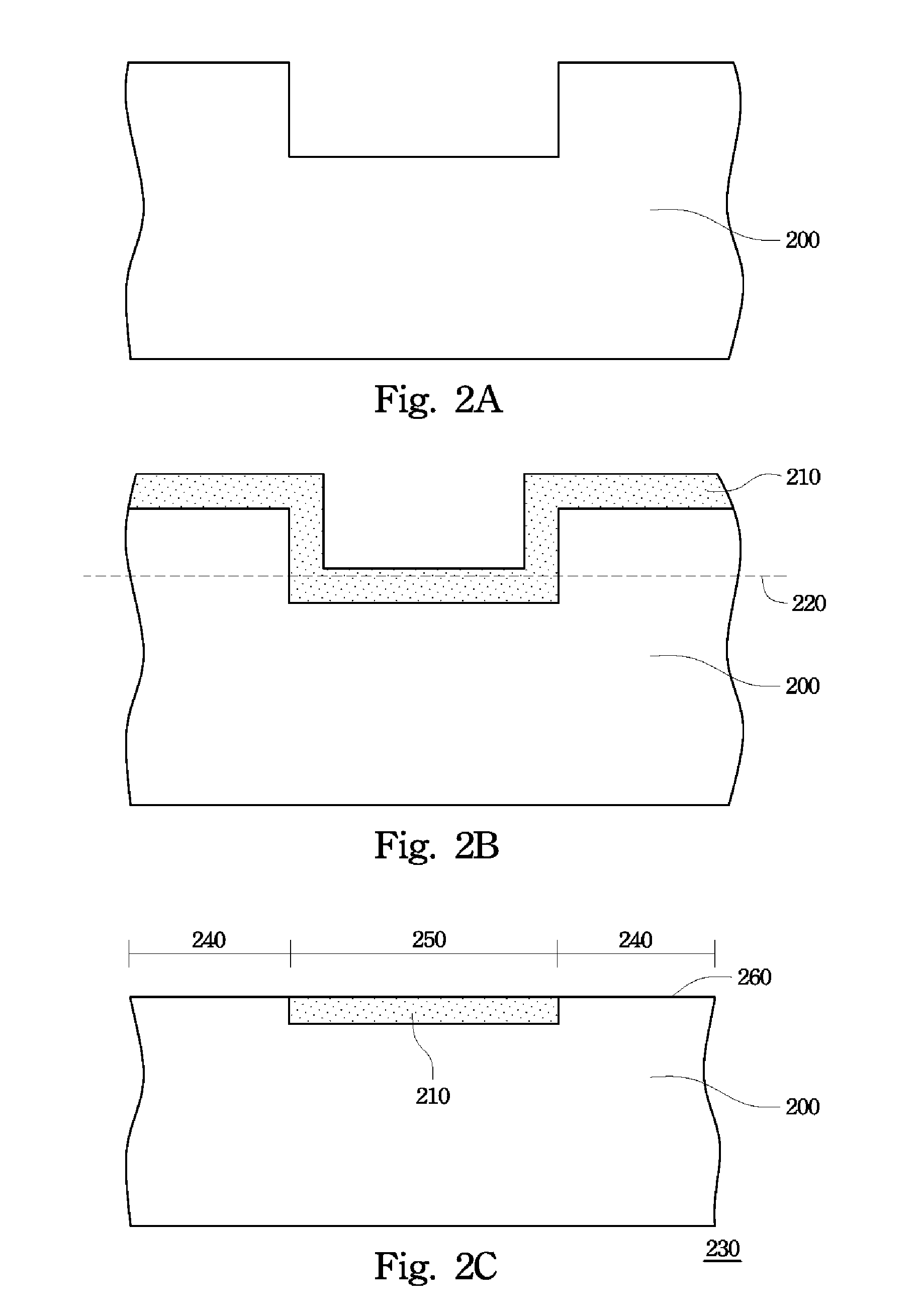Inlaid polishing pad and method of producing the same
a polishing pad and polishing technology, applied in the direction of manufacturing tools, grinding devices, lapping machines, etc., can solve the problems of increasing the difficulty of pattern transfer from a photomask to a photoresist layer, the cmp process suffers from low throughput, and the exposed pattern of the photoresist layer becomes increasingly distorted
- Summary
- Abstract
- Description
- Claims
- Application Information
AI Technical Summary
Benefits of technology
Problems solved by technology
Method used
Image
Examples
embodiment 1
[0032]FIGS. 2A-2C are schematic, cross-sectional views showing a process of producing polishing pads according to a preferred embodiment of this invention. First, a polymer is molded in a cavity 110 of the mold 100 in FIG. 1 to form a semi-finished pad 200 with thicker and thinner regions, shown in FIG. 2A. In FIG. 2B, a surface treatment is performed on the top surface of the semi-finished pad 200 to form a treated layer 210 having different rigidity on the top portion of the semi-finished pad 200. The semi-finished pad 200 can be leveled along the line 220 shown in FIG. 2B to form a polishing pad 230, as shown in FIG. 2C. In FIG. 2C, the top surface 260 of the polishing pad 230 has at least two regions with different rigidities; that is, the region 240 and the region 250. The region 250 is formed by the treated layer 210 inlaid in the top surface 260.
[0033] According to a preferred embodiment, the surface treatment in the process of producing the polishing pad 230 can be illumina...
embodiment 2
[0038]FIGS. 3A and 3B are schematic, cross-sectional views showing a process of producing polishing pads according to another preferred embodiment of this invention. With reference to FIGS. 1, 3A and 3B, first, a small amount of first polymer is formed in the cavity 110 of the mold 100 to form a surface layer 310, wherein the first polymer does not fully fill the cavity 110. The forming method of the first polymer includes injection molding or in-mold coating. Then, a second polymer is injected into the cavity 110 of the mold 100 to fully fill the volume surrounded by the surface layer 310, as shown in FIG. 3A.
[0039] The surface layer 310 and the body 320, formed by the method of the two-step injection molding, compose the semi-finished pad 300 with thinner and thicker regions in FIG. 3A. The semi-finished pad 300 is then leveled along the line 330 shown in FIG. 3A to form a polishing pad 360, as shown in FIG. 3B. In FIG. 3B, the top surface 370 of the polishing pad 360 has at leas...
PUM
| Property | Measurement | Unit |
|---|---|---|
| rigidity | aaaaa | aaaaa |
| densities | aaaaa | aaaaa |
| shape | aaaaa | aaaaa |
Abstract
Description
Claims
Application Information
 Login to View More
Login to View More - R&D
- Intellectual Property
- Life Sciences
- Materials
- Tech Scout
- Unparalleled Data Quality
- Higher Quality Content
- 60% Fewer Hallucinations
Browse by: Latest US Patents, China's latest patents, Technical Efficacy Thesaurus, Application Domain, Technology Topic, Popular Technical Reports.
© 2025 PatSnap. All rights reserved.Legal|Privacy policy|Modern Slavery Act Transparency Statement|Sitemap|About US| Contact US: help@patsnap.com



